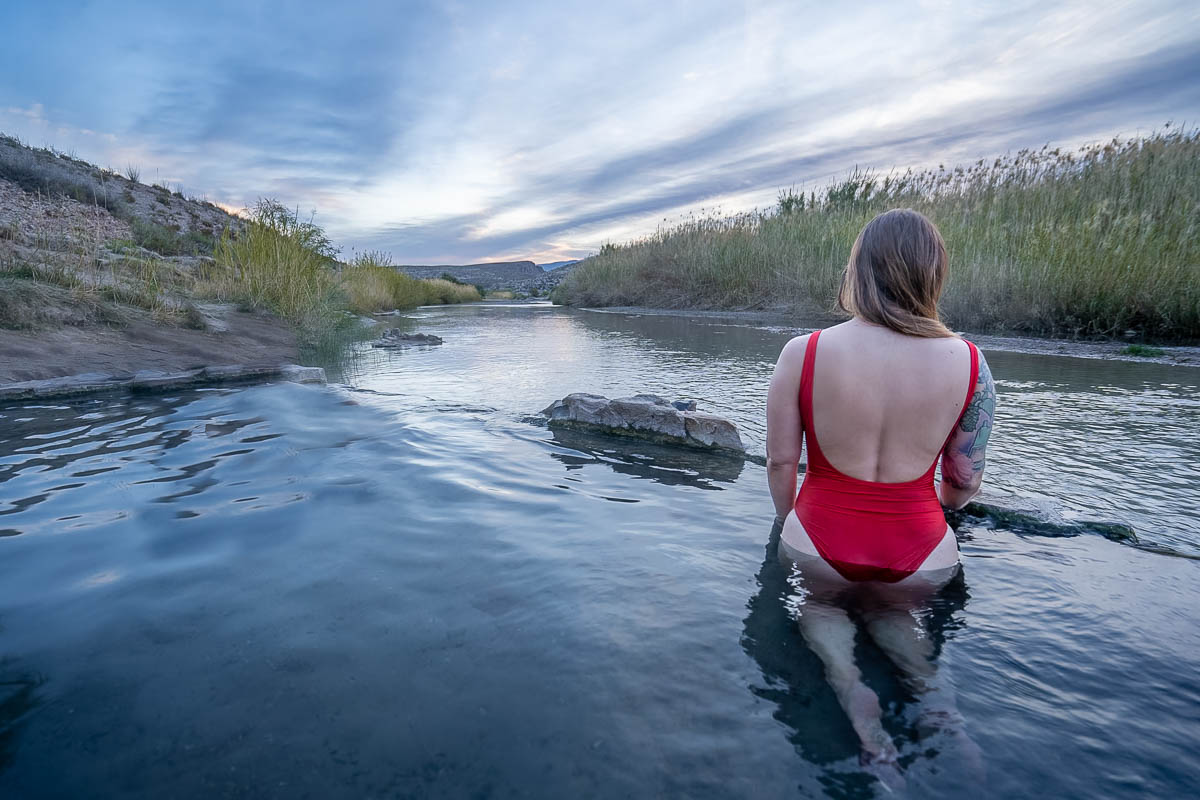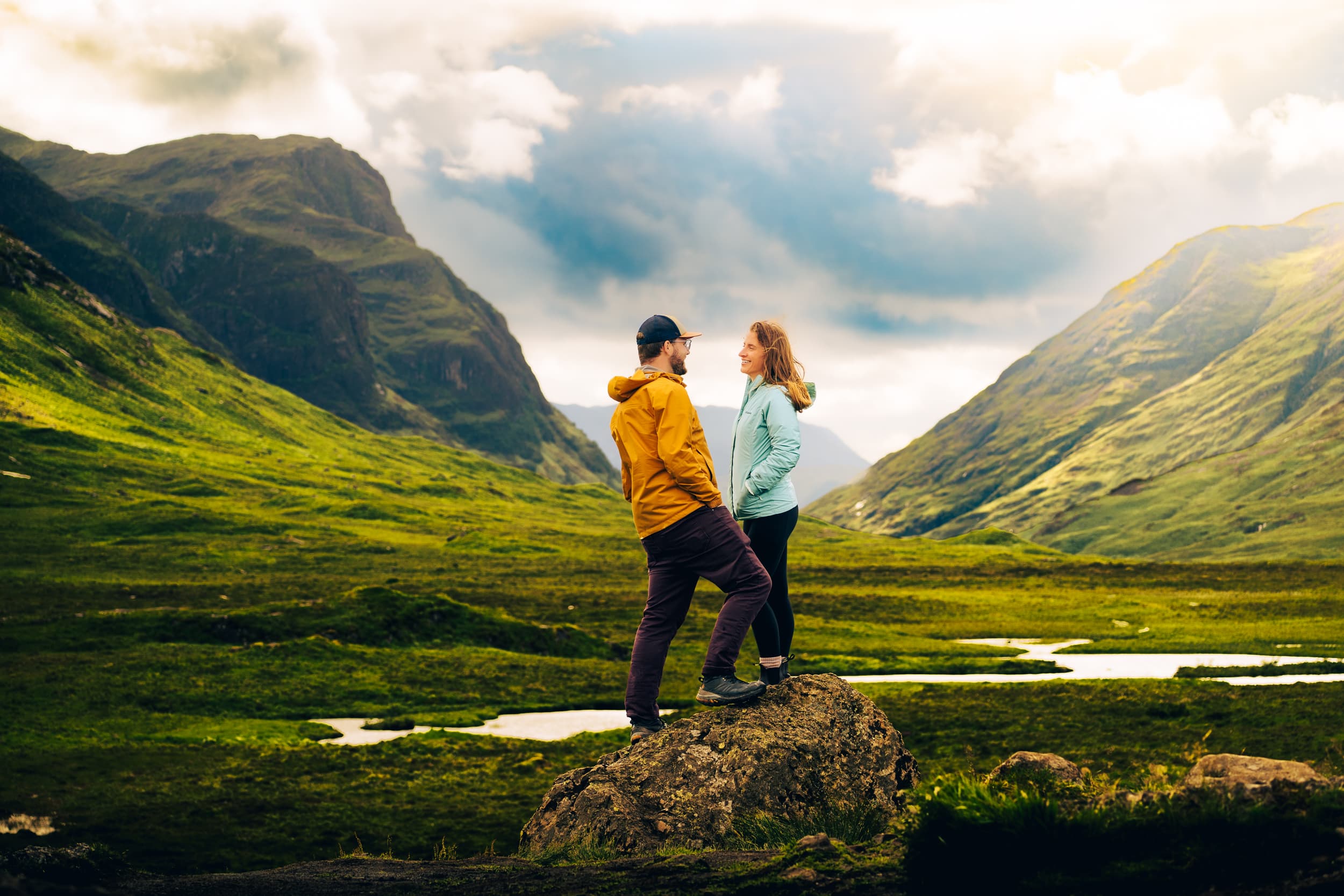Big Bend Hot Springs, also called “Langford Hot Springs” or “Boquillas Hot Springs”, is one of the most unique things to do in Big Bend National Park. Not only are these hot springs located in the foundation of an old bathhouse along the Rio Grande, but you can also explore the ruins of a 20th century hot springs resort and even spot some ancient petroglyphs on your way to enjoy them.
Here’s everything you need to know to include Big Bend Hot Springs in your next trip to the national park.
This post may contain affiliate links. If you make a purchase through them, we may receive a small commission, for which we are extremely grateful, at no extra cost to you.
How to get to the Big Bend Hot Springs trailhead
Getting to Big Bend National Park
Big Bend National Park is located along the Mexican border in West Texas. Its remote location is a double-edged sword—it’s kind of a pain in the butt to get here, but this stunning park is WAY less crowded than it otherwise would be.
Here’s how far Big Bend is from some major U.S. cities:
- From El Paso: 4 and a half hours
- From San Antonio: 6 hours
- From Austin: 6 hours and 45 minutes
- From Dallas: 7 hours and 50 minutes
- From Houston: 8 hours and 40 minutes
Accordingly, you’ll definitely need a car to get to and from Big Bend!
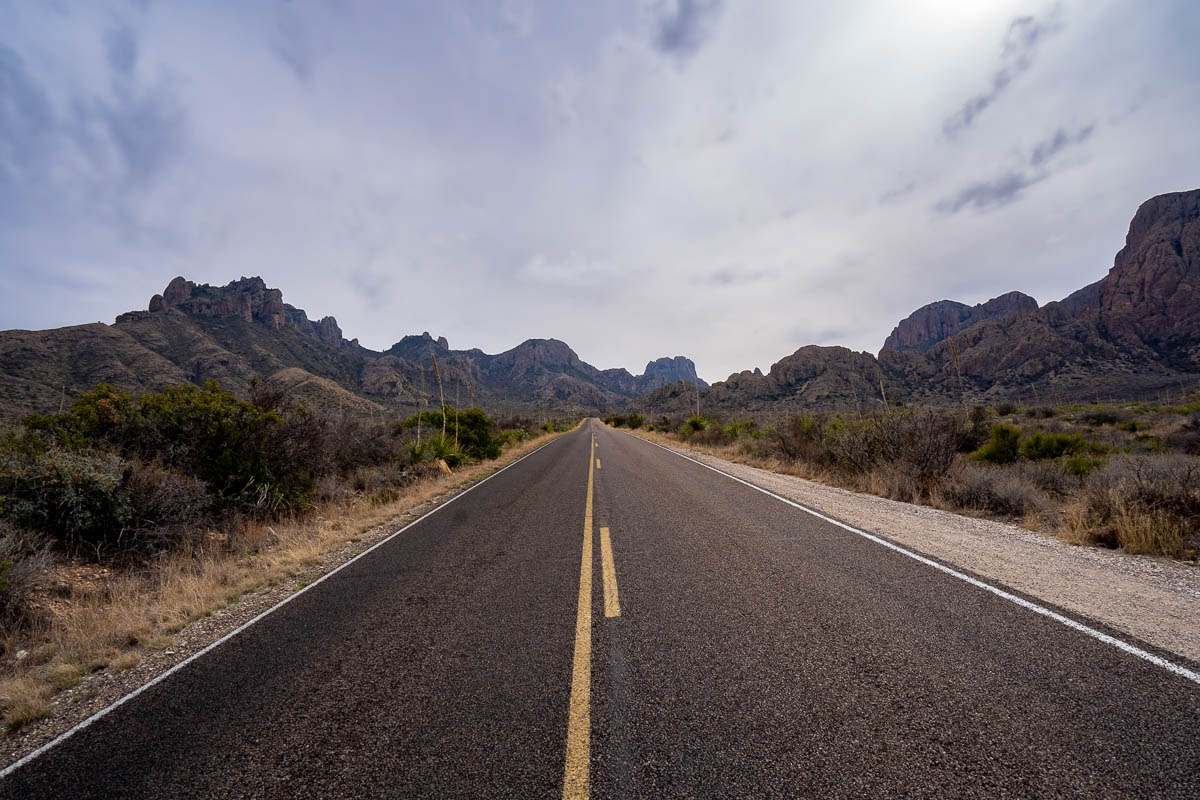
It costs $30 per vehicle for a week-long pass in the park. Alternatively, you can buy an America the Beautiful pass, which, for just $80, gets you into all of the U.S. National Parks and over 2,000 federally managed sites for an entire year for free!
Getting to Big Bend Hot Springs
Big Bend Hot Springs are located here along the southeastern border of the national park on the banks of the Rio Grande, in its Rio Grande Village section.
In order to reach the trailhead for Big Bend Hot Springs, you need to make your way down the 1.6 mile-long Hot Springs Road. This is a very windy, narrow, and not very well-maintained road. While I think most passenger vehicles should be able to get down the road just fine if you take it slow and carefully, you should not take trailers, RVs, or other dual wheeled vehicles down this road.

Once you get to the trailhead, there’s a dirt parking lot that holds about two dozen or so cars. There’s sometimes vendors from across the border that come to sell their handicrafts in the parking lot, so if you’re looking for a souvenir or want to support the locals, bring some cash!
There are vault toilets in the parking lot if you need to change into your swimsuit or go to the restroom. Since there aren’t any near the hot spring itself, I’d suggest stopping here!
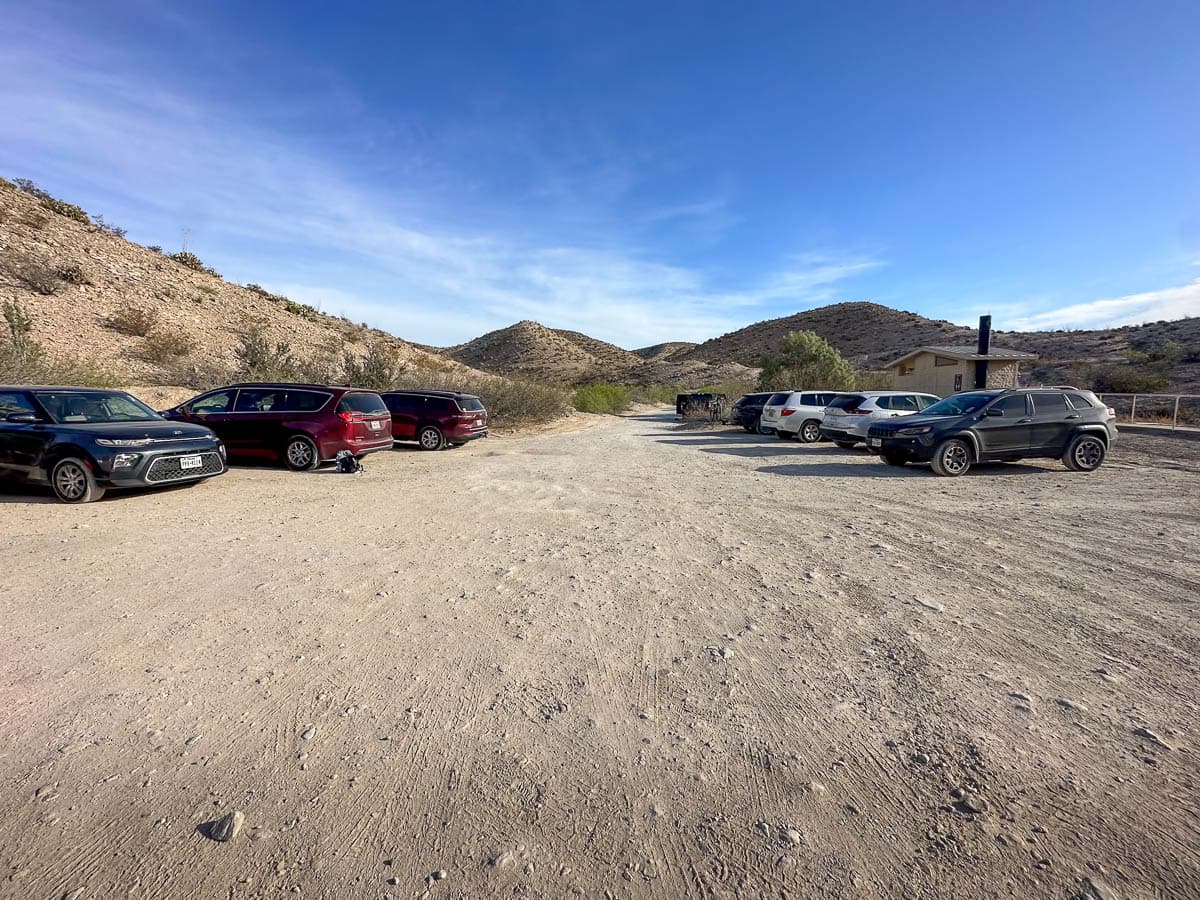
Tip: There’s a sign in the parking lot that says “thefts from unattended vehicles occur frequently at this site.” I scoured the Internet to find instances of this and couldn’t find anything so I’m not sure how recently this has been an issue.
That being said, my husband, Justin, and I always err on the safe side—don’t leave any valuables in your car here, especially if you're enjoying the springs at night or in the very early morning!
Big Bend Hot Springs Trail
To reach the hot springs, you’ll need to walk a bit along a flat hiking trail.
About the Big Bend Hot Springs Trail
- Length: a 1.2 mile loop (about 0.6 miles roundtrip if you’re just interested in going to the hot springs)
- Elevation gain: 144 feet
- Difficulty: Easy
- Dog-friendly? No, like most U.S. National Park hikes, you’ll need to leave the puppers at home for this one.
- Trail map
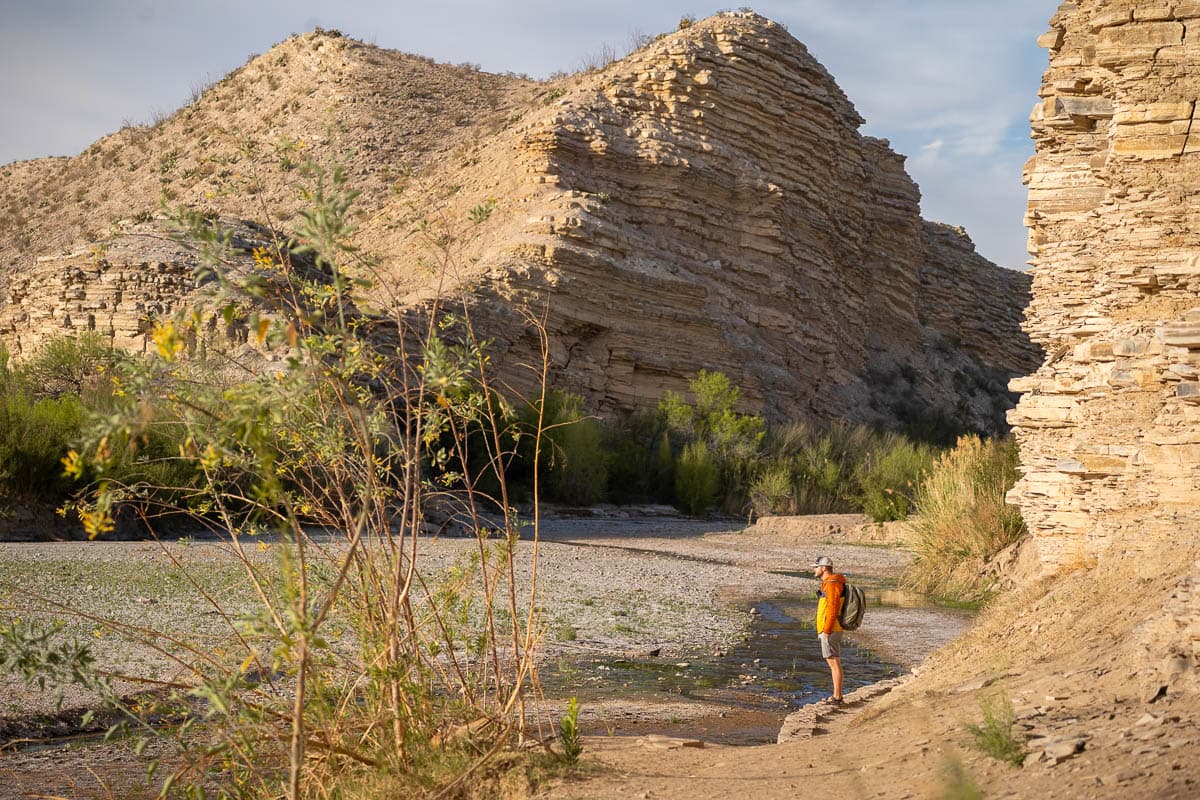
What to expect along the Big Bend Hot Springs Trail
From the trailhead parking lot, you’ll walk along a mostly flat dirt pathway, passing an old motel and post office from the early 1900s.
There’s several educational signs here where you can learn about the history of the Langford Hot Springs Resort, which was the first attraction in the Big Bend area during its run from 1909 to 1952. The original owner of the hot spring, J.O. Langford, believed the springs’ waters had medicinal properties and that, after 21 days of soaking in and drinking its waters, he was cured from the malaria side effects that had plagued him since he was a child.
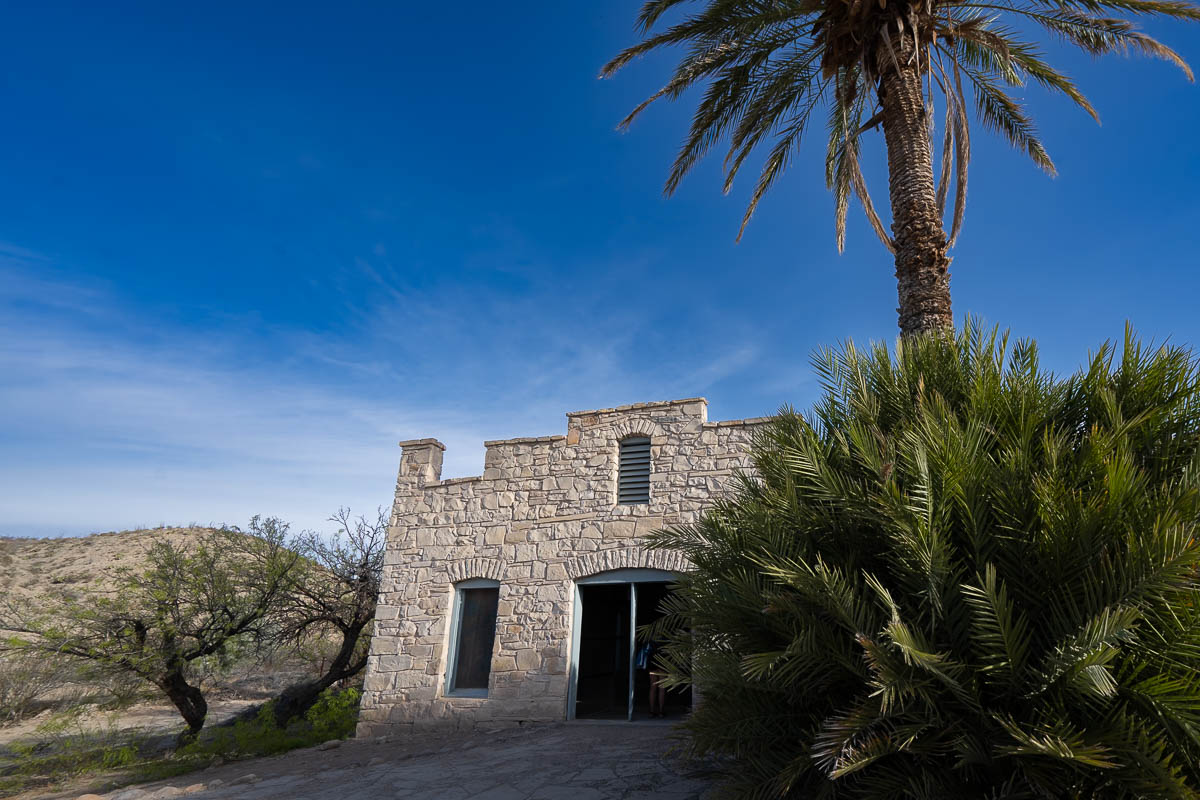
After passing the buildings, keep your eyes peeled on the limestone cliffs on the left hand side of the trail, where you can spot pictographs and petroglyphs. These have been left behind by Indigenous peoples who have lived in the Chihuahuan Desert and actually used the hot springs for hundreds of years.
Around 0.3 miles into the trail, you’ll see the hot springs in the old resort’s foundation on the banks of the Rio Grande. There’s a sandy bank where you can leave your clothing and other belongings while you enjoy the hot springs.
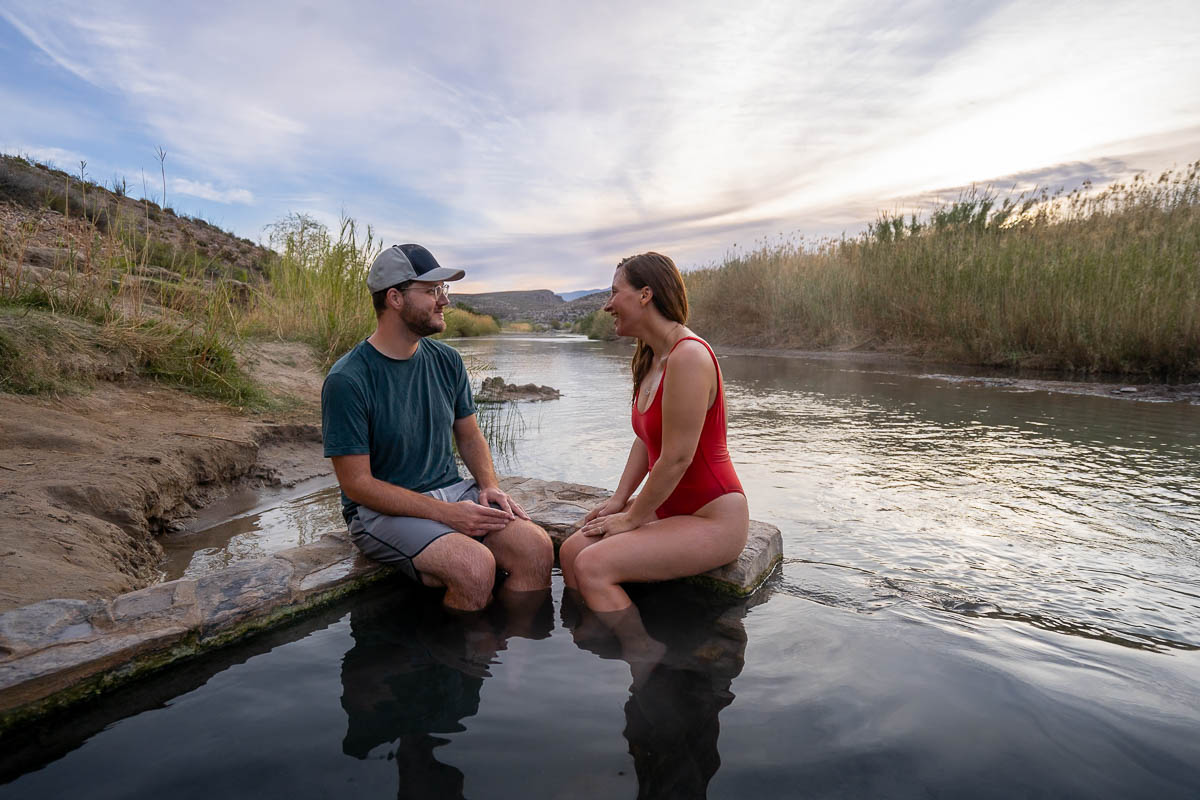
The water is the PERFECT temperature when it’s a bit cool out—a hot-tub-esque 105 degrees—but probably doesn’t feel quite as nice when it’s already sweltering out.
If the water level of the Rio Grande is low enough, it feels so nice to jump in to cool off in its waters—just make sure the current isn’t too strong before getting in!
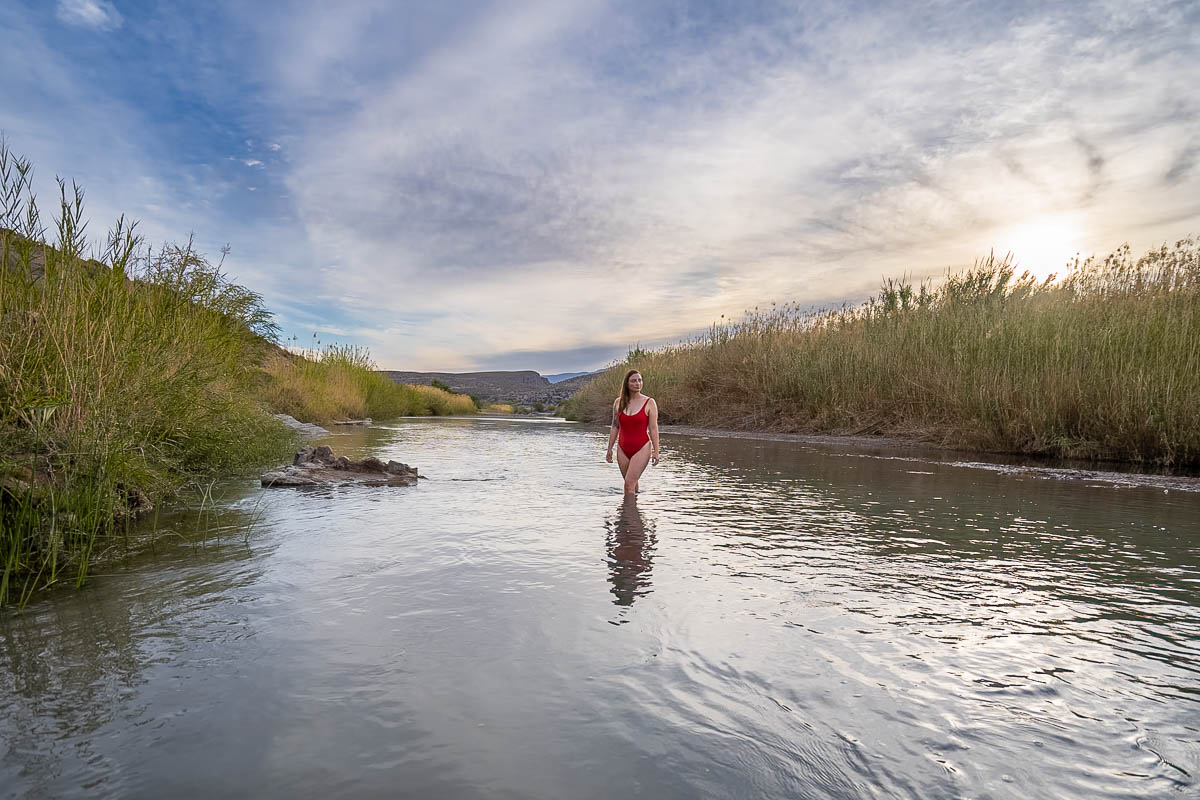
Once you’re done enjoying the hot springs, if you want to finish the loop trail, you’ll continue to follow the pathway along the Rio Grande for about 0.2 miles, before hiking up to a ridgeline. This upper portion of the trail offers stunning views of the Rio Grande below and beyond, Mexico and the Chihuahuan Desert—plus it also tends to be a lot quieter than the beginning portion of this trail!
From here, you’ll walk down a gently sloping hill back to the trailhead.
Tip: To be honest, most visitors just hike to the hot springs and back. However, if you’re interested in doing the full loop, I’d recommend doing it *backwards*—hiking the trail clockwise so you hit the upper portion of the trail first and can save the hot springs for the end of the hike.
When to visit Big Bend Hot Springs
In terms of the time of year to visit, the hot springs are their most enjoyable from October through March, when the temperatures are cool enough to be pleasant.
Outside of that, temperatures can easily exceed 100 degrees—which is not exactly ideal for sitting in a pool of steaming hot water.
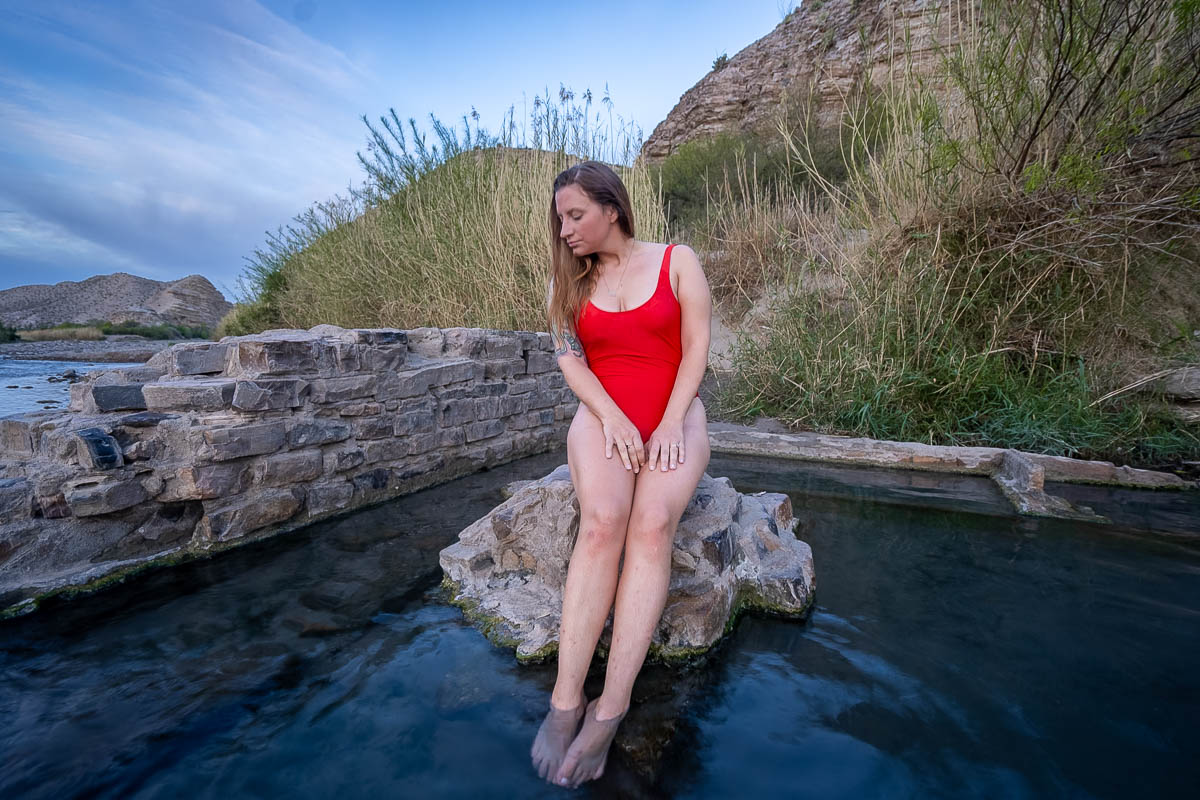
Plus, July through September is the rainy season. This can lead to cool water run-off from the Rio Grande completely flooding the hot springs, making them unusable or potentially even dangerous.
In terms of the time of day to visit, I’d HIGHLY recommend trying to get there early—as in sunrise early. Enjoying the hot springs is one of the most popular things to do in Big Bend and they can get quite crowded as the day wears on. We got here a bit before sunrise on a Wednesday in March, hoping to get some photos without other people around, but there were already three other groups of people there!
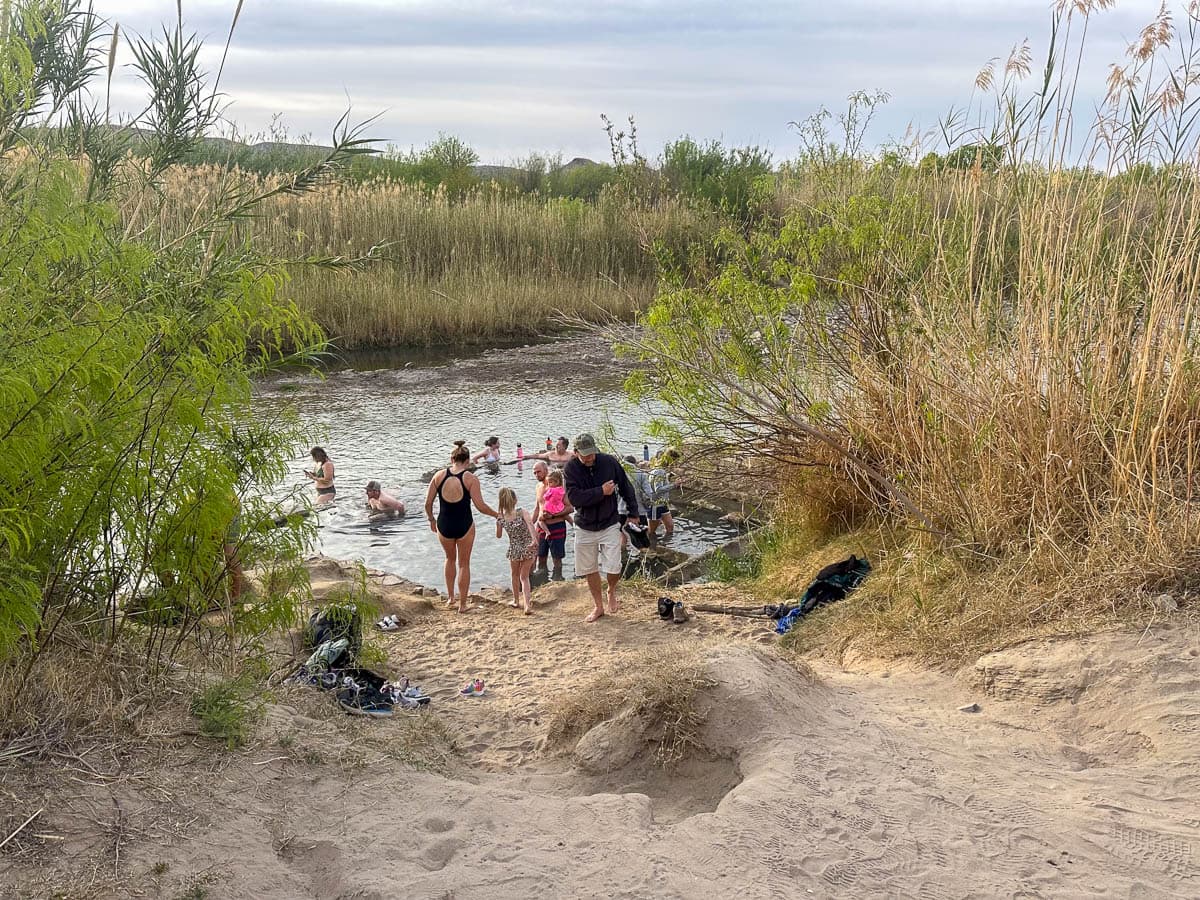
I’ve also heard that, although alcohol is not technically allowed in the hot springs, there can be some hardcore party vibes in the late afternoon and into the evenings. So you may want to avoid this timeframe if you plan on visiting with younger kids or would just rather enjoy the springs in relative peace and quiet.
Tip: Consider combining your visit to Big Bend Hot Springs with a trip to the cute town of Boquillas del Carmen across the Mexican border, given that its Port of Entry is located just 15 minutes from the hot springs' parking lot. This experience is quite unique—Big Bend is the only national park that you can walk into Mexico from and one of only two national parks where you can cross an international border.
There's quite a few things you need to know about your visit, like what to bring and when the Port of Entry is open, but lucky for you, we wrote a whole post with everything you need to know about Boquillas del Carmen.
What to know about visiting Big Bend Hot Springs
Rangers actively patrol the hot springs.
Justin and I would definitely call ourselves rule-followers, but, across the 30+ national parks that we’ve visited, we’ve seen LOTS of people breaking LOTS of rules.
Not that I’d recommend breaking the rules in any of the national parks, but Big Bend Hot Springs is definitely not the place to do it, given how heavily they’re patrolled by rangers.
We visited the hot springs around 6:30 AM and, within 15 minutes of arriving, a ranger had hiked down the path and ticketed one of the other people in the pool with us, given they had camped in the parking lot overnight.
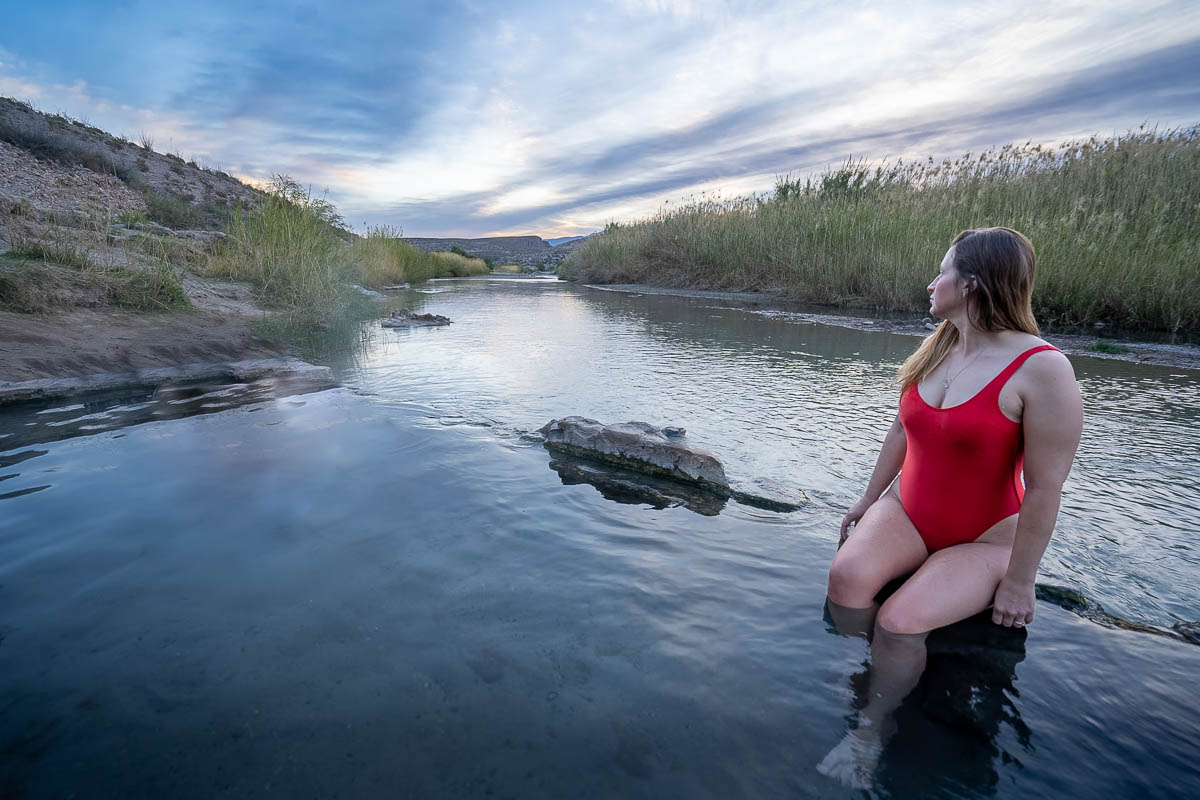
We’ve also heard that a ranger visits every evening and most nights, to ensure the party vibes are under control and everyone is abiding by the rules, which include:
- No camping anywhere in the Big Bend Hot Springs vicinity, including in the parking lot.
- No alcoholic beverages or glass containers
- No littering
- Don’t buy souvenirs or other items from vendors that stand on the Mexican side of the Rio Grande
For what it’s worth, I’ve heard some of these prohibitions are enforced more loosely than others (cough, cough, bringing alcohol to the springs), but be aware that people can and do regularly get ticketed.
Wear a swimsuit
Justin and I lived in the Pacific Northwest for several years, where it was accepted in most hot springs to bathe in the nude.
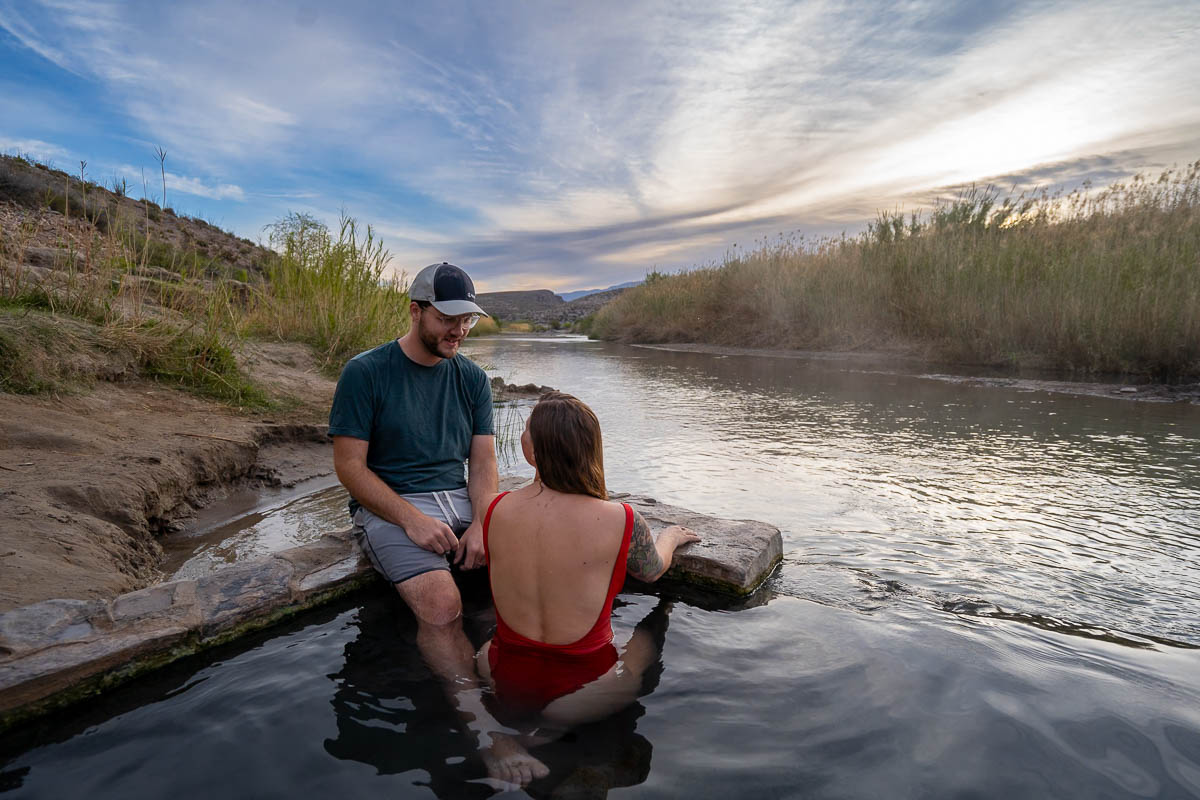
Big Bend Hot Springs are not like that—they’re crowded, full of families, and, as mentioned above, actively patrolled by rangers. Wear a swimsuit!
Watch out for wildlife
While most people think of the Chihuahuan Desert as being barren and lifeless, it’s anything but. In fact, over 4,000 species of critters call Big Bend home!
There are a few of these creatures you should keep an eye out for.
For example, there are five types of venomous snakes in the park, four of which are rattlesnakes. Keep an eye out on your footing on the trail so you don’t accidentally step on or kick one.
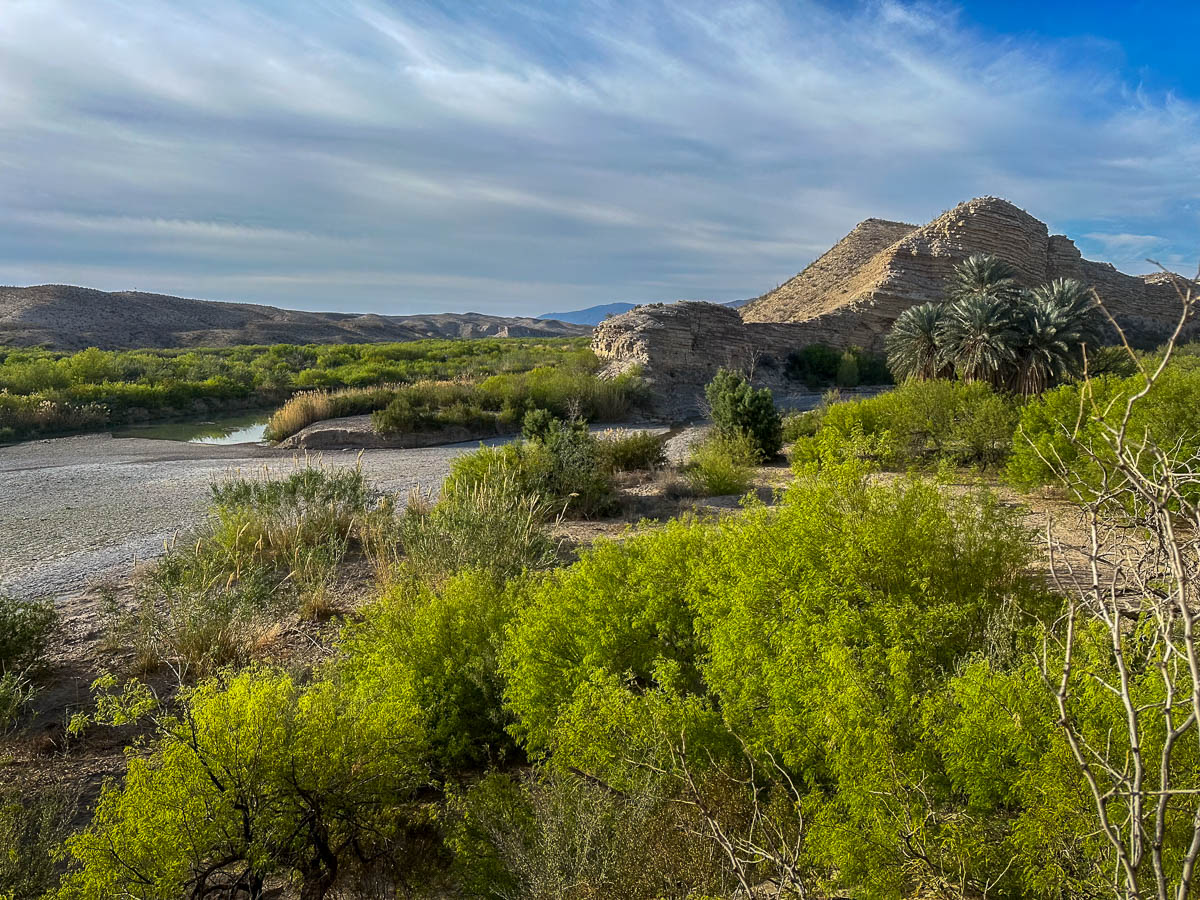
Additionally, black bears, on rare occasions, are spotted in the area. Black bears are generally not a threat to humans, but may act aggressively if they’re trying to protect their young or are startled. So be sure to stay alert on the trail and, if you happen to see a bear along the way, talk calmly, but loudly and back away slowly to give them plenty of space.
What to bring to Big Bend Hot Springs
- Swimsuit: As mentioned above, no bathing in the nude here!
- Towel
- Hiking sandals: The trail is generally pretty even and flat, so, in my opinion, you can get away just fine with hiking sandals, like our beloved Tevas. Plus, they’re handy to wear if you decide to wade out in the Rio Grande—the bottom can be pretty rocky! If you know me, you know I wear these Tevas 99% of the time and Justin is always wearing his.
- Reusable water bottle: Unsurprisingly, the hot springs can be, well, hot, so stay hydrated while you’re soaking!

We thought this was such a unique aspect of Big Bend and hope you enjoy it as much as we did! Do you have any questions about Big Bend Hot Springs? Let us know in the comments below!

